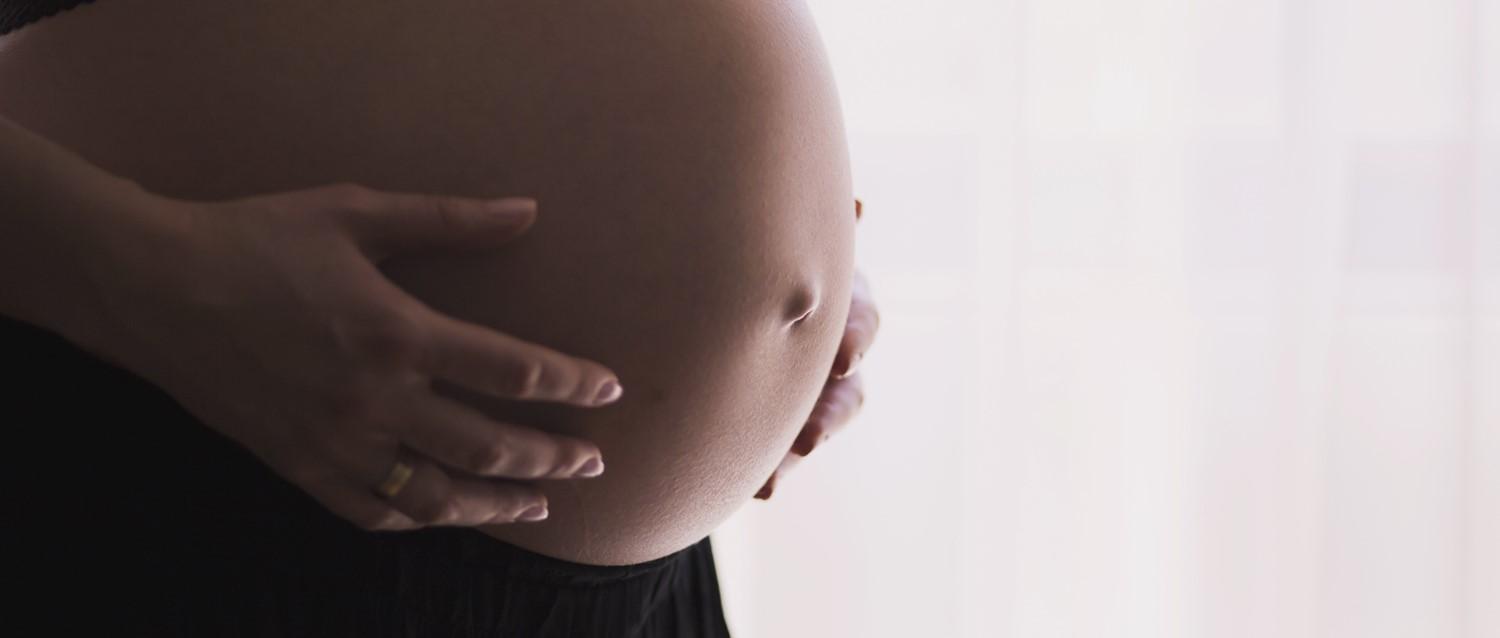
Should you worry about pelvic pain in pregnancy?
Peer reviewed by Dr Sarah Jarvis MBE, FRCGPLast updated by Karen GordonLast updated 24 Jan 2018
- DownloadDownload
- Share
Pelvic pain or discomfort is common during pregnancy and can be a real concern for many mums-to-be. It can occur at almost any point and its impact can range from a few twinges to debilitating pain.
According to Dr Katy Vincent, senior pain fellow, locum consultant gynaecologist and member of the Wellbeing of Women Research Advisory Committee, most women will experience some pelvic discomfort in pregnancy and many would describe it as pain. But sometimes pain can be a red flag that something more serious is wrong. So, what are the most common causes and when is it time to consult your midwife?
In this article:
Continue reading below
Pelvic pain during the first trimester
In the first 8 to 12 weeks of pregnancy, it's quite common to get accommodation pain, which feels like mild abdominal twinges or cramps. If you have any pains that are stronger or longer-lasting, it's important to see your GP for advice. "In early pregnancy, miscarriage commonly presents with pain," says Vincent. Unfortunately, as many as 25% of pregnancies in the UK end in miscarriage, making it a very common occurrence. The main symptoms are vaginal bleeding and lower abdominal pain or pelvic cramps.
"If someone develops pain in their first trimester, you always need to rule out an ectopic pregnancy, which is when a pregnancy tries to develop outside of the womb," says Mr Pandelis Athanasias, consultant obstetrician and gynaecologist at the London Women's Centre.
Ectopic pregnancies occur in about 1% of pregnancies and the symptoms include pain on one side of the lower abdomen or pelvis. "An ultrasound scan will tell you where the pregnancy is located and whether it's viable," says Athanasias.
If the corpus luteum, a small fluid-filled sac on the ovary which releases progesterone until the placenta takes over, ruptures during the first trimester, this can also considerable pain.
Pelvic pain isn't always due to the pregnancy itself and doesn't always come from the womb, says Ms Shirin Irani, consultant gynaecologist at Spire Parkway Hospital. "You would also want to rule out appendicitis, a urinary tract infection, kidney stones and even constipation."
Pelvic pain during the second and third trimester
Going into your second trimester, you may start to feel pain in one or both your sides of your abdomen. As your womb grows, the round ligaments stretch and thicken to accommodate and support your growing bump. "Ligament pain is more common in the second trimester of pregnancy and it usually gets better in the third trimester," says Athanasias.
Later in pregnancy, pelvic girdle pain (PGP) is probably the most common cause of pelvic pain and is estimated to occur in 20% of pregnancies.
"When you're pregnant, the fixed joint called the symphysis pubis becomes softer and starts to move a bit and become strained," explains Dr Karen Morton, consultant gynaecologist and founder of Dr Morton's medical helpline. "It's so painful and tender, it can literally leave a woman unable to walk. She may need crutches or even a wheelchair because of this incapacitating pain."
Morton says that the practicality of the immobility of PGP is most concerning because, when pregnant women become immobile, their circulation diminishes. "They are more at risk of deep vein thrombosis (DVT) through their immobility, and it's important they're given supportive stockings to compress their lower legs or given blood thinning injections."
Continue reading below
How do you know if pelvic pain is something more serious?
If pain is associated with bleeding at any stage in pregnancy, Vincent recommends getting this checked out. "Similarly, if this is accompanied by an offensive vaginal discharge or sudden loss of fluid, speak with your doctor or midwife. A fever, which is generally a sign of being generally unwell, could also be an indication of something more serious such as chorioamnionitis (infection within the uterus) or a kidney infection," she says.
"Pain may be associated with reduced fetal movements. This should always be reviewed at the maternity unit. The baby's movement may respond to simple measures such as drinking an iced or hot drink."
She also recommends consulting a doctor if you have a very hard abdomen (described as woody), which is a classic symptom of a placental abruption, where the placenta separates from the uterus.
"Finally, if the pains come and go, and they are getting stronger and closer together, this could be early labour and should be checked out - sooner rather than later - if under 37 weeks," says Vincent.
Effective self-help options for pelvic pain
As long as serious causes have been excluded, Vincent recommends the following self-help options.
Try taking a painkiller, such as paracetamol, which is safe to take during pregnancy.
Take warm baths. These relax muscles and reduces stress and anxiety.
Drink plenty of water and rehydrate. Dehydration can supposedly worsen Braxton Hicks, and exacerbate constipation, as well as worsen a urine infection as more concentrated urine irritates the bladder.
Wear a pelvic support belt. If pain is due to PGP, a support belt takes some of the weight off the pelvis and acts a little like the muscles that are not functioning effectively
Stop wearing high heels. If the pain is muscular in origin, it will put less strain on the pelvis.
Article history
The information on this page is peer reviewed by qualified clinicians.
24 Jan 2018 | Latest version

Ask, share, connect.
Browse discussions, ask questions, and share experiences across hundreds of health topics.

Feeling unwell?
Assess your symptoms online for free